Thursday, 27th January 2022
World Economic Outlook Report 2022
In News
The International Monetary Fund (IMF) has downgraded global growth projections in the latest World Economic Outlook Report for the year 2022.
Global Projections
- GDP Estimates:
- The global economy in 2022 is in a weaker position than previously expected.
- IMF sharply downgraded its forecasts for the two biggest global economies - the US and China - citing high energy prices and new Covid curbs among its reasons.
- Overall, the IMF now expects global growth to go from 5.9% in 2021 to 4.4% in 2022, half a percentage point lower for this year than in its last prediction in October 2021.

- Rise in Inflation:
- A higher and more broad-based inflation than anticipated, notably in the US and many emerging market and developing economies is a result of Rising energy prices, supply disruptions and localised wage pressures
- The IMF predicted that the higher levels of inflation currently seen in the global economy would go on for longer than it anticipated in its last forecast, persisting for most of 2022.
- Inflation will ease later this year as supply-demand imbalances wane in 2022 and monetary policy in major economies responds.
- Future Forecast:
- Looking ahead, the report upgraded its 2023 growth forecast by 0.2 percentage points to 3.8%.
- However, it warned that the estimate precluded the emergence of a new Covid variant, and said any pickup would be dependent on equitable global access to vaccines and health care.
- Other Risks:
- The Fund also alluded to the possibility of geopolitical tensions (the US and Russia are locked in a bitter dispute over Ukraine) and the ongoing climate emergency as other risks.
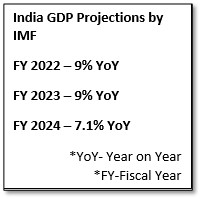
India Projections
- The Fund estimates that India will grow at 9% in 2021-2022, down 0.5 points from its October 2021 assessment due to the possible impact of the Omicron variant of Covid-19 on mobility restrictions and business activities.
- India’s prospects for 2023 are marked up on expected improvements to credit growth – and subsequently investment and consumption – building on better-than-anticipated performance of the financial sector
Sources:
Padma Awards 2022
In News
Recently, former West Bengal CM Buddhadeb Bhattacharjee refused to accept Padma award this year.
About the News
- The Padma awards are announced every year on the eve of Republic Day and as many as 128 people are selected for conferment of the awards.
- The awardee ranges from veteran politicians, businessmen, scientists and doctors to artists and ordinary people engaged in public service.
What are Padma awards?
- The PADMA Awards were instituted in 1954 along with Bharat Ratna and initially only included Padma Vibhushan with three sub-categories – Pahela Varg, Dusra Varg and Tisra Varg.
- Awards were subsequently renamed as Padma Vibhushan, Padma Bhushan and Padma Shri vide Presidential Notification issued on January 8, 1955.
- The Padma awards are the highest civilian honour of India after the Bharat Ratna and are given in three categories: Padma Vibhushan (for exceptional and distinguished service), Padma Bhushan (distinguished service of higher order) and Padma Shri (distinguished service).
- The awards are given in certain select categories which include Art, Social Work, Public Affairs, Science & Engineering, Trade & Industry, Medicine, Literature & Education, Civil Service and Sports. Awards are also given for propagation of Indian culture, protection of human rights, wildlife protection among others.
- The awardees do not get any cash reward but a certificate signed by the President apart from a medallion which they can wear at public and government functions.
- The awards are not a conferment of title and the awardees are expected to not use them as prefix or suffix to their names.
- A Padma awardee can be given a higher award only after five years of the conferment of the earlier award.
- Not more than 120 awards can be given in a year but this does not include posthumous awards or awards given to NRIs and foreigners.
- The award is normally not conferred posthumously. However, in highly deserving cases, the Government could consider giving an award posthumously.
- During the years 1978 and 1979 and 1993 to 1997, Padma awards were not announced.

Who is eligible for Padma awards?
- All persons without distinction of race, occupation, position or sex are eligible for these awards.
- Government servants including those working with PSUs, except doctors and scientists, are not eligible for these awards.
- The award seeks to recognise works of distinction and is given for distinguished and exceptional achievements or service in all fields of activities and disciplines.
- According to Padma awards selection criteria, the award is given for “special services” and not just for “long service”.
How are the awardees decided?
- Nomination: Any citizen of India can nominate a potential recipient. One can even nominate one’s own self. As per Home Ministry, there is no rigid criteria or trenchant formula for selection, however, the lifetime achievement of an individual is among the main considerations.
- Selection: All nominations received for Padma awards are placed before the Padma Awards Committee, which is constituted by the Prime Minister every year. The recommendations of the committee are submitted to the Prime Minister and the President of India for final approval.
Sources:
Great Nicobar EIA Report
In News
Recently released draft environment impact assessment (EIA) report for the mega development project in the Great Nicobar Island have raised allegations.
About the News
- Allegations relate to incorrect/incomplete information, scientific inaccuracy and failure to follow appropriate procedure.
- The issue is related to the NITI Aayog-piloted ₹72,000-crore integrated project in the Great Nicobar Island.
- Concerns Raised:
- Incomplete data: Data on ecology and biodiversity that includes plants, animals, migratory birds and coral reefs found in the island are found to be incomplete, inconsistent and incorrect.
- Institutional callousness: The EIA report seems to lack details of the project proponent’s environment policy such as its standard operating process, procedures for highlighting violation of environmental norms which are required for ensuring compliance with environmental clearance conditions.
What is the Great Nicobar Project?
- The NITI Aayog has developed a Rs 75,000 crore vision for the ‘Holistic Development of Great Nicobar Island in Andaman and Nicobar Islands’.
- The goal of the project is to enable the overall development of Great Nicobar Island, with a diverse and robust economy based on maritime services, tourism amongst other economic drivers.
- The Development of Great Nicobar Islands project includes four different projects namely
- Integrated Development of International Container Transshipment Terminal;
- Greenfield International Airport (4,000 peak hour passengers);
- township and area development;
- A 450-MVA gas and solar power plant spreading over 16,610 hectares in Great Nicobar Islands, Nicobar district at Great Nicobar Island and District Nicobar Taluka Campbell Bay.
- Overall, about 16,610 hectare of land will be converted into residential, commercial, institutional etc. categories.
- The pre-feasibility report for NITI Aayog, only the airport project requires resettlement, and the number of affected persons is low.
- The large majority of the existing corals have been avoided through careful siting. The urban development will be kept on a small footprint along the edges of the island that are least frequented by the Shompen and the Nicobarese.

Source:
World Economic Outlook Report 2022
In News
The International Monetary Fund (IMF) has downgraded global growth projections in the latest World Economic Outlook Report for the year 2022.
Global Projections
- GDP Estimates:
- The global economy in 2022 is in a weaker position than previously expected.
- IMF sharply downgraded its forecasts for the two biggest global economies - the US and China - citing high energy prices and new Covid curbs among its reasons.
- Overall, the IMF now expects global growth to go from 5.9% in 2021 to 4.4% in 2022, half a percentage point lower for this year than in its last prediction in October 2021.

- Rise in Inflation:
- A higher and more broad-based inflation than anticipated, notably in the US and many emerging market and developing economies is a result of Rising energy prices, supply disruptions and localised wage pressures
- The IMF predicted that the higher levels of inflation currently seen in the global economy would go on for longer than it anticipated in its last forecast, persisting for most of 2022.
- Inflation will ease later this year as supply-demand imbalances wane in 2022 and monetary policy in major economies responds.
- Future Forecast:
- Looking ahead, the report upgraded its 2023 growth forecast by 0.2 percentage points to 3.8%.
- However, it warned that the estimate precluded the emergence of a new Covid variant, and said any pickup would be dependent on equitable global access to vaccines and health care.
- Other Risks:
- The Fund also alluded to the possibility of geopolitical tensions (the US and Russia are locked in a bitter dispute over Ukraine) and the ongoing climate emergency as other risks.
India Projections
- The Fund estimates that India will grow at 9% in 2021-2022, down 0.5 points from its October 2021 assessment due to the possible impact of the Omicron variant of Covid-19 on mobility restrictions and business activities.
- India’s prospects for 2023 are marked up on expected improvements to credit growth – and subsequently investment and consumption – building on better-than-anticipated performance of the financial sector
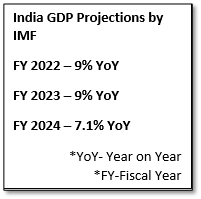
Sources:
Padma Awards 2022
In News
Recently, former West Bengal CM Buddhadeb Bhattacharjee refused to accept Padma award this year.
About the News
- The Padma awards are announced every year on the eve of Republic Day and as many as 128 people are selected for conferment of the awards.
- The awardee ranges from veteran politicians, businessmen, scientists and doctors to artists and ordinary people engaged in public service.
What are Padma awards?
- The PADMA Awards were instituted in 1954 along with Bharat Ratna and initially only included Padma Vibhushan with three sub-categories – Pahela Varg, Dusra Varg and Tisra Varg.
- Awards were subsequently renamed as Padma Vibhushan, Padma Bhushan and Padma Shri vide Presidential Notification issued on January 8, 1955.
- The Padma awards are the highest civilian honour of India after the Bharat Ratna and are given in three categories: Padma Vibhushan (for exceptional and distinguished service), Padma Bhushan (distinguished service of higher order) and Padma Shri (distinguished service).
- The awards are given in certain select categories which include Art, Social Work, Public Affairs, Science & Engineering, Trade & Industry, Medicine, Literature & Education, Civil Service and Sports. Awards are also given for propagation of Indian culture, protection of human rights, wildlife protection among others.
- The awardees do not get any cash reward but a certificate signed by the President apart from a medallion which they can wear at public and government functions.
- The awards are not a conferment of title and the awardees are expected to not use them as prefix or suffix to their names.
- A Padma awardee can be given a higher award only after five years of the conferment of the earlier award.
- Not more than 120 awards can be given in a year but this does not include posthumous awards or awards given to NRIs and foreigners.
- The award is normally not conferred posthumously. However, in highly deserving cases, the Government could consider giving an award posthumously.
- During the years 1978 and 1979 and 1993 to 1997, Padma awards were not announced.
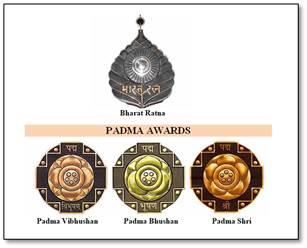
Who is eligible for Padma awards?
- All persons without distinction of race, occupation, position or sex are eligible for these awards.
- Government servants including those working with PSUs, except doctors and scientists, are not eligible for these awards.
- The award seeks to recognise works of distinction and is given for distinguished and exceptional achievements or service in all fields of activities and disciplines.
- According to Padma awards selection criteria, the award is given for “special services” and not just for “long service”.
How are the awardees decided?
- Nomination: Any citizen of India can nominate a potential recipient. One can even nominate one’s own self. As per Home Ministry, there is no rigid criteria or trenchant formula for selection, however, the lifetime achievement of an individual is among the main considerations.
- Selection: All nominations received for Padma awards are placed before the Padma Awards Committee, which is constituted by the Prime Minister every year. The recommendations of the committee are submitted to the Prime Minister and the President of India for final approval.
Sources:
Great Nicobar EIA Report
In News
Recently released draft environment impact assessment (EIA) report for the mega development project in the Great Nicobar Island have raised allegations.
About the News
- Allegations relate to incorrect/incomplete information, scientific inaccuracy and failure to follow appropriate procedure.
- The issue is related to the NITI Aayog-piloted ₹72,000-crore integrated project in the Great Nicobar Island.
- Concerns Raised:
- Incomplete data: Data on ecology and biodiversity that includes plants, animals, migratory birds and coral reefs found in the island are found to be incomplete, inconsistent and incorrect.
- Institutional callousness: The EIA report seems to lack details of the project proponent’s environment policy such as its standard operating process, procedures for highlighting violation of environmental norms which are required for ensuring compliance with environmental clearance conditions.
What is the Great Nicobar Project?
- The NITI Aayog has developed a Rs 75,000 crore vision for the ‘Holistic Development of Great Nicobar Island in Andaman and Nicobar Islands’.
- The goal of the project is to enable the overall development of Great Nicobar Island, with a diverse and robust economy based on maritime services, tourism amongst other economic drivers.
- The Development of Great Nicobar Islands project includes four different projects namely
- Integrated Development of International Container Transshipment Terminal;
- Greenfield International Airport (4,000 peak hour passengers);
- township and area development;
- A 450-MVA gas and solar power plant spreading over 16,610 hectares in Great Nicobar Islands, Nicobar district at Great Nicobar Island and District Nicobar Taluka Campbell Bay.
- Overall, about 16,610 hectare of land will be converted into residential, commercial, institutional etc. categories.
- The pre-feasibility report for NITI Aayog, only the airport project requires resettlement, and the number of affected persons is low.
- The large majority of the existing corals have been avoided through careful siting. The urban development will be kept on a small footprint along the edges of the island that are least frequented by the Shompen and the Nicobarese.
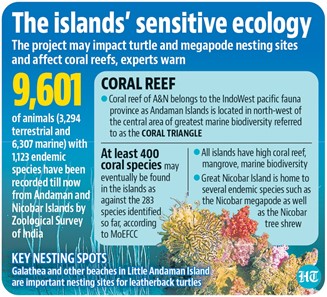
Source:
- ‘Inaccuracies, procedural violations’ in Great Nicobar draft environment impact assessment report
- Green panel allows Great Nicobar plan to advance
- Experts fear biodiversity loss in Andaman, Nicobar Islands
- Explained: The controversial project to ‘develop’ the Great Nicobar Islands; public hearing on Jan 27:
International Holocaust Remembrance Day
On January 27, 1945 allied forces liberated Auschwitz-Birkenau from Nazi clutches. Hence, every year on January 27, the International Holocaust memorial day is celebrated to commemorate this event. In November 2005, the United Nations General Assembly officially proclaimed January 27 as International Holocaust Remembrance Day. Adolf Hitler's Nazi regime and its collaborators led to the extermination of around six million Jews through a systematic, bureaucratic and state-sponsored persecution during World War II. When the Nazis began their Holocaust programme, they also targeted people from other communities due to their perceived racial and biological inferiority. Other targeted groups include Roma (Gypsies), people with disabilities and Slavic race, especially Polish and Russians. The observance of this day also reaffirms a commitment to counter racism, anti-semitism, and other forms of intolerance that may lead to violence against a particular group based on race, ethnicity or religion.

Source:
International Holocaust Remembrance Day
On January 27, 1945 allied forces liberated Auschwitz-Birkenau from Nazi clutches. Hence, every year on January 27, the International Holocaust memorial day is celebrated to commemorate this event. In November 2005, the United Nations General Assembly officially proclaimed January 27 as International Holocaust Remembrance Day. Adolf Hitler's Nazi regime and its collaborators led to the extermination of around six million Jews through a systematic, bureaucratic and state-sponsored persecution during World War II. When the Nazis began their Holocaust programme, they also targeted people from other communities due to their perceived racial and biological inferiority. Other targeted groups include Roma (Gypsies), people with disabilities and Slavic race, especially Polish and Russians. The observance of this day also reaffirms a commitment to counter racism, anti-semitism, and other forms of intolerance that may lead to violence against a particular group based on race, ethnicity or religion.

Source:
- Holocaust Remembrance Day: Horrific atrocities by Nazis that shook humanity:
- International Holocaust Remembrance Day: Theme, significance, events scheduled:
Electronics Industry in India
In News
MeitY recently unveiled 5 year roadmap to achieve US $300 billion from electronics manufacturing and $ 120 billion exports by 2026.
About the News
As per the Vision document, under the ‘unforeseen and unprecedented’ challenges brought by the pandemic, India is likely to achieve electronics production of $300 billion by 2026, lower than the target of $400 billion by 2025 set as per the National Policy on Electronics (NPE) 2019. However, the reduced target still aims for a 400% increase from the current level.
- NPE 2019 envisages strengthening India’s linkages with global trade, integration with global value chains and build policies and incentive framework to boost exports. The policy aims to transform India into a destination for manufacturing and exports.
Roadmap to manufacture US$300 billion Electronic Products
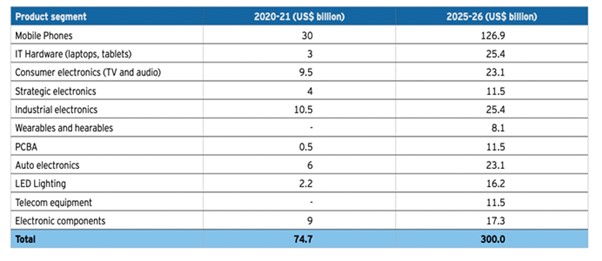
About the electronics Industry
- The electronics industry is one of the largest and fastest growing industries in the world.
- With the world being more connected than ever and the digital push induced by COVID-19 pandemic; the demand for electronic devices is expected to grow steadily and continue to be a major economic driver across the globe.
- The electronics manufacturing growth in the country remained almost between ₹5,33,670 crore in 2020-21 and ₹5,33,550 crore in 2019-20.
- The global electronics industry is estimated at US$ 2.9 trillion in 2020. For comparison, the global value of electronics industry is almost equal to the economy size of India, which currently stands at US$ 2.9 trillion.
Challenges to the Electronics industry in India

What is the Roadmap to overcome these challenges?


Question: Discuss the challenges in development of a successful electronics industry in India. What should be the steps taken to overcome these challenges?
Sources:
Electronics Industry in India
In News
MeitY recently unveiled 5 year roadmap to achieve US $300 billion from electronics manufacturing and $ 120 billion exports by 2026.
About the News
As per the Vision document, under the ‘unforeseen and unprecedented’ challenges brought by the pandemic, India is likely to achieve electronics production of $300 billion by 2026, lower than the target of $400 billion by 2025 set as per the National Policy on Electronics (NPE) 2019. However, the reduced target still aims for a 400% increase from the current level.
- NPE 2019 envisages strengthening India’s linkages with global trade, integration with global value chains and build policies and incentive framework to boost exports. The policy aims to transform India into a destination for manufacturing and exports.
Roadmap to manufacture US$300 billion Electronic Products

About the electronics Industry
- The electronics industry is one of the largest and fastest growing industries in the world.
- With the world being more connected than ever and the digital push induced by COVID-19 pandemic; the demand for electronic devices is expected to grow steadily and continue to be a major economic driver across the globe.
- The electronics manufacturing growth in the country remained almost between ₹5,33,670 crore in 2020-21 and ₹5,33,550 crore in 2019-20.
- The global electronics industry is estimated at US$ 2.9 trillion in 2020. For comparison, the global value of electronics industry is almost equal to the economy size of India, which currently stands at US$ 2.9 trillion.
Challenges to the Electronics industry in India

What is the Roadmap to overcome these challenges?

Question: Discuss the challenges in development of a successful electronics industry in India. What should be the steps taken to overcome these challenges?
Sources:
The Great Dying
This is image of Fossils, over 250 million years old, found at the Guryul Ravine fossil site in Khanmoh, J&K. The Guryul Ravines in Kashmir, geologically known as the Vihi district, are a repository of fossils that hold evidence of the Permian–Triassic extinction event, dating as far as back 260 million years, one of the oldest of its types in the entire world. Most importantly, the world's first-ever recorded tsunami event is well preserved in the rocks of Guryul Ravines. Also known as the End-Permian Extinction or, colloquially, the ‘Great Dying’, the Permian-Triassic extinction event marked the boundaries between the Permian and Triassic geological periods, as well as between the Paleozoic and Mesozoic eras approximately 251.9 million years ago. It was one of the major extinction events that the planet ever saw, when biodiversity decreased rapidly and across wide stretches. It was also the largest known mass extinction of insects.

Source:
The Great Dying
This is image of Fossils, over 250 million years old, found at the Guryul Ravine fossil site in Khanmoh, J&K. The Guryul Ravines in Kashmir, geologically known as the Vihi district, are a repository of fossils that hold evidence of the Permian–Triassic extinction event, dating as far as back 260 million years, one of the oldest of its types in the entire world. Most importantly, the world's first-ever recorded tsunami event is well preserved in the rocks of Guryul Ravines. Also known as the End-Permian Extinction or, colloquially, the ‘Great Dying’, the Permian-Triassic extinction event marked the boundaries between the Permian and Triassic geological periods, as well as between the Paleozoic and Mesozoic eras approximately 251.9 million years ago. It was one of the major extinction events that the planet ever saw, when biodiversity decreased rapidly and across wide stretches. It was also the largest known mass extinction of insects.

Source:
Pradhan Mantri Rashtriya Bal Puraskar
- Context: The Pradhan Mantri Rashtriya Bal Puraskar (PMRBP) has been awarded to 29 children for the year 2022.
- The Prime Minister's National Award for Children, commonly known as the Pradhan Mantri Rashtriya Bal Puraskar, is a civilian award in India conferred to children with exceptional abilities and outstanding accomplishments in 6 categories namely:
- Innovation
- Social services
- Scholastic
- Sports
- Art and culture and
- Bravery
- The award carries a cash prize of Rs.1,00,000/-
- The award has been divided into two groups:
- The Bal Shakti Puraskar is given to Indian citizens under the age of 18 who have excelled in one of six categories.
- Individuals or organisations who have made remarkable contributions to child protection, child development, or child welfare are given the Bal Kalyan Puraskar.
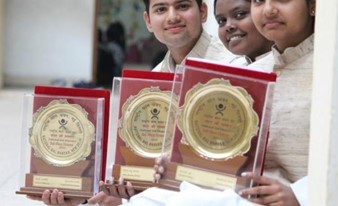
Source:
Pradhan Mantri Rashtriya Bal Puraskar
- Context: The Pradhan Mantri Rashtriya Bal Puraskar (PMRBP) has been awarded to 29 children for the year 2022.
- The Prime Minister's National Award for Children, commonly known as the Pradhan Mantri Rashtriya Bal Puraskar, is a civilian award in India conferred to children with exceptional abilities and outstanding accomplishments in 6 categories namely:
- Innovation
- Social services
- Scholastic
- Sports
- Art and culture and
- The award carries a cash prize of Rs.1,00,000/-
- The award has been divided into two groups:
- The Bal Shakti Puraskar is given to Indian citizens under the age of 18 who have excelled in one of six categories.
- Individuals or organisations who have made remarkable contributions to child protection, child development, or child welfare are given the Bal Kalyan Puraskar.
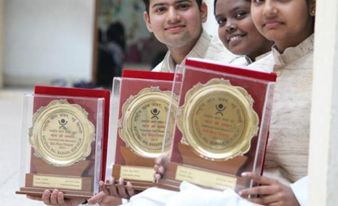
Source:
- Braveheart, maths wiz, dancer and Covid warriors among 29 to bag Bal Puraskar
- Pradhan Mantri Rashtriya Bal Puraskar
Image source:
Oslo Meet
- Context: Taliban and Western diplomats have recently met in Oslo to discuss the humanitarian crisis in Afghanistan.
- In their first visit to Europe since returning to power in August, the Taliban will meet representatives of the United States, France, Britain, Germany, Italy, the European Union and Norway.
- The discussions will focus on the current humanitarian situation in Afghanistan which has deteriorated drastically with the toppling of the Government by the Taliban after 2 decades.
- The international community is waiting to see how the Taliban intend to govern after being accused of trampling on human rights during their first stint in power between 1996 and 2001.
- Since then, there has been a breach of human rights especially those of women whose freedoms have been curbed.
- While the fundamentalists claim to have modernized, women are still largely excluded from public-sector employment and most secondary schools for girls remain closed.
- Hunger seems to threaten 23 million Afghans which is 55% of the population.
- Added to this is the fact that no country has yet recognised the Taliban government. Because of this, the International aid, which financed around 80% of the Afghan budget, has been suspended and the United States has frozen $9.5 billion in assets in the Afghan central bank.
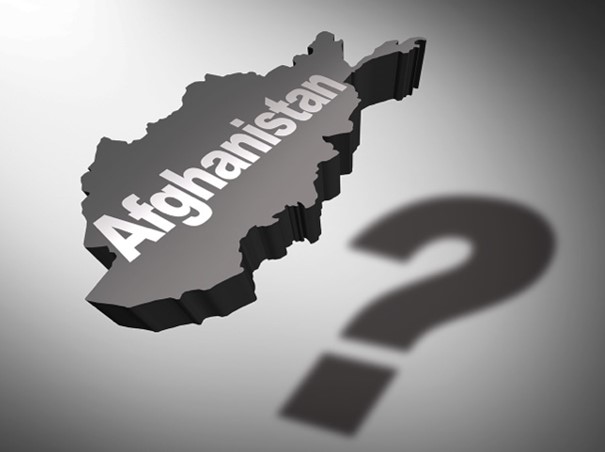
Source:
Image Source:
Solar Flares
- Context: The Sun was recently observed to have emitted a powerful solar flare causing a shortwave radio blackout around the Indian Ocean.
- Solar flares are powerful magnetic storms that erupt from the sun, unleashing enough energy to detonate a few million hydrogen bombs all at once.
- They are massive bursts of electromagnetic radiation from the Sun that last anywhere from a few seconds to several hours.
- Strong geomagnetic storms are created when radiation, energetic particles, and solar plasma material generated during a solar flare interact with the Earth's magnetosphere and ionosphere.
- Strong currents are generated at ground level, which can cause electric power networks in countries at high latitudes to trip, affecting air traffic on polar routes.
- During the solar flare, the highly energetic charged particles are expelled from the sun at speeds close to the speed of light which can disturb the ionosphere region of the Earth which plays an important role in radio communication.

Source:
- Solar flare causes radio blackout over Indian Ocean, could spark minor geomagnetic storms
- SOLAR FLARES (RADIO BLACKOUTS)
Image Source:
Community Transmission
- Context: India has acknowledged that the Covid-19 pandemic is reaching the community transmission stage.
- Community transmission means an illness spreads in such a way that the source of its infection is not knowne., when the source of transmission for a large number of people is not traceable.
- Majority of influenza, avian flu epidemics, H1N1 virus, sometimes known as swine flu in the past are believed to be spread predominantly by community transmission.
- In the case of community transmission, contact tracing (each individual with whom the patient has come in contact is closely monitored) is inadequate in containing the disease. This is because any person irrespective of whether she or he has been exposed to an already infected person or have travelled to affected countries remains vulnerable.
- Community transmission is the final stage of the WHO classification of the epidemic the other three being-no active cases, sporadic cases and cluster of cases.
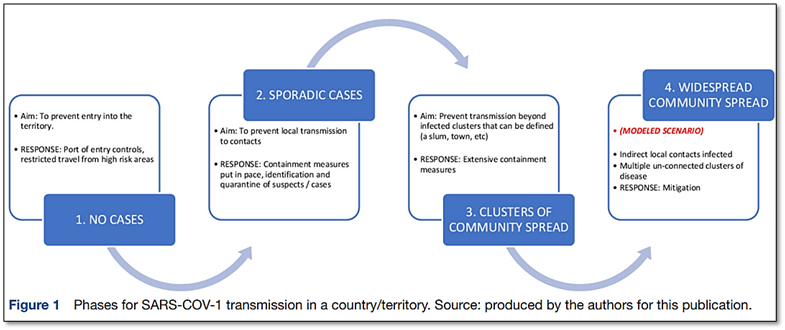
Source:
- Covid-19 pandemic now in community transmission stage in India: What this means
- What is community transmission — how one can contract COVID-19 without travelling
Image Source:
Unlock India’s food processing potential: TH
Essence: With growing global population, ability to sustainably feed their population is set to become the benchmark for judging progress of a nation. Increasing demand for ready to eat food coupled with increasing awareness of functional food and presence of an untapped foreign market is set to provide a launchpad for health-orientated start-ups and micro-food processing units to contribute in food security.
The government has launched the Production-Linked Incentive Scheme (PLIS) to incentivise the food industry to increase sales and for supporting branding and marketing activities in foreign markets. These initiatives must be coupled with Smart financing alternatives such as peer-to-peer (P2P) lending and invest in public infrastructure to ensure that Indian food processing industries will be able to sustainably meet demands of domestic and foreign consumers.
Why should you read this article?
- To understand opportunities created for the food industry because of pandemic and increasing awareness of the population.
- To understand goals and some of the features of Production-Linked Incentive Scheme (PLIS) for food processing industries.
- To know some more steps which should be taken to promote food processing industries.
Source:
The consequences of an ill-considered green strategy: IE
Essence: The article highlights the global food crises that may be caused due to ill-considered strategy to shift to renewable energy sources. Problems of vagaries in climate is leading to increase in the demand for natural gas to make up for the electricity shortfall. Increase in the demand for the natural gas has led to increase in its cost which has in turn impacted the household energy bills. This has severely affected the cost of fertilizers, leading to rise in food prices.
India is currently not facing the brunt at very high level due to low share of natural gas in the energy mix of the country. This crisis teaches the countries to be cautious while hurriedly switching to renewable sources of energy, without checking the situations of shortage or finances. The lesson to be learnt is that India should test its alternative clean sources properly before abandoning cheap and reliable sources completely.
Why you should read this article?
- To understand the repercussions of ill framed green strategy.
- To understand the how the energy crises in Europe can have bearing on global prices of LNG.
- To understand why India should brace itself before shifting to renewable energy source.
Source:
The geo-politics of gas pipeline: HBL
Essence: The editorial focuses on the gas pipeline politics around Europe and Asia and major gas suppliers to the region. Recently, USA withdrew its support to Cryprus led EastMed gas pipeline due to factors like environmental, financial and Turkey’s obstruction to the project. Though Cyprus had planned the project for its economic good, the country is reluctant for a greener transition. Presently, USA (with 5% proven gas reserves) is the world’s largest exporter of gas while Russia has 24% proven gas reserves. This itself shows the kind of competition both countries carry to sell gas around the world. In addition, Russia bypassed Belarus and Ukraine to supply gas to Europe via Nord Stream and is building Power of Siberia pipeline to supply gas to China.
As far as India’s energy security is concerned, India’s bulk container gas suppliers are Qatar, Australia and USA. It is in India’s interest if the TAPI pipeline is executed as Turkmenistan houses world’s second largest proven gas reserves.
Why you should read this article?
- To understand the gas pipeline politics of Europe and how it affects India.
- To analyze the reason for stalling of EastMed pipeline.
Source:
Awareness to Medicinal Plantation- Kangra
Background
- India is rich in various traditional health care practices like Ayurveda, Siddha, Unani, Swarigpa, and Homeopathy.
- Dr Sunil Kumar, an ayurvedic doctor as well as the district nodal officer of the State Medicinal Plants Board has started the work of spreading awareness about medicinal farming.
Dr. Sunil’s Contribution for Medicinal farming
- Trying all sorts of things like- getting medicinal plantation on eight-canal land, protecting traditional methods of ayurvedic production and encouraging labor activities etc., Dr. Sunil Kumar has developed awareness in small farmers through direct contact.
- Initially, people were skeptical, but now they have joined hand with Mr. Kumar and reaping the benefits of successful harvesting in medicinal plants.
- Moving to a self-reliant and healthy society because of medicinal plantation and wealth, today Medicinal farming is being done by 71 farmers in 39 villages in five blocks in Kangra district.
- Sufficient land and knowledge of herb marketing has helped rural farmers to earn a high income in a very moderate investment.
- The production and cultivation of medicinal herbs in India is mostly unorganized. The production and sale of medicinal plants in the nation would be improved with better supply chain management and the development of farmer groups.
Quote: “The ultimate goal of farming is not the growing of crops, but the cultivation and perfection of human beings.”
- Masanobu Fukuoka.
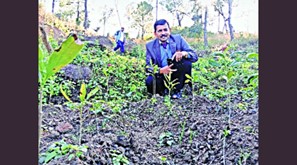
Source:
Share the article
Get Latest Updates on Offers, Event dates, and free Mentorship sessions.

Get in touch with our Expert Academic Counsellors 👋
FAQs
UPSC Daily Current Affairs focuses on learning current events on a daily basis. An aspirant needs to study regular and updated information about current events, news, and relevant topics that are important for UPSC aspirants. It covers national and international affairs, government policies, socio-economic issues, science and technology advancements, and more.
UPSC Daily Current Affairs provides aspirants with a concise and comprehensive overview of the latest happenings and developments across various fields. It helps aspirants stay updated with current affairs and provides them with valuable insights and analysis, which are essential for answering questions in the UPSC examinations. It enhances their knowledge, analytical skills, and ability to connect current affairs with the UPSC syllabus.
UPSC Daily Current Affairs covers a wide range of topics, including politics, economics, science and technology, environment, social issues, governance, international relations, and more. It offers news summaries, in-depth analyses, editorials, opinion pieces, and relevant study materials. It also provides practice questions and quizzes to help aspirants test their understanding of current affairs.
Edukemy's UPSC Daily Current Affairs can be accessed through:
- UPSC Daily Current Affairs can be accessed through Current Affairs tab at the top of the Main Page of Edukemy.
- Edukemy Mobile app: The Daily Current Affairs can also be access through Edukemy Mobile App.
- Social media: Follow Edukemy’s official social media accounts or pages that provide UPSC Daily Current Affairs updates, including Facebook, Twitter, or Telegram channels.





